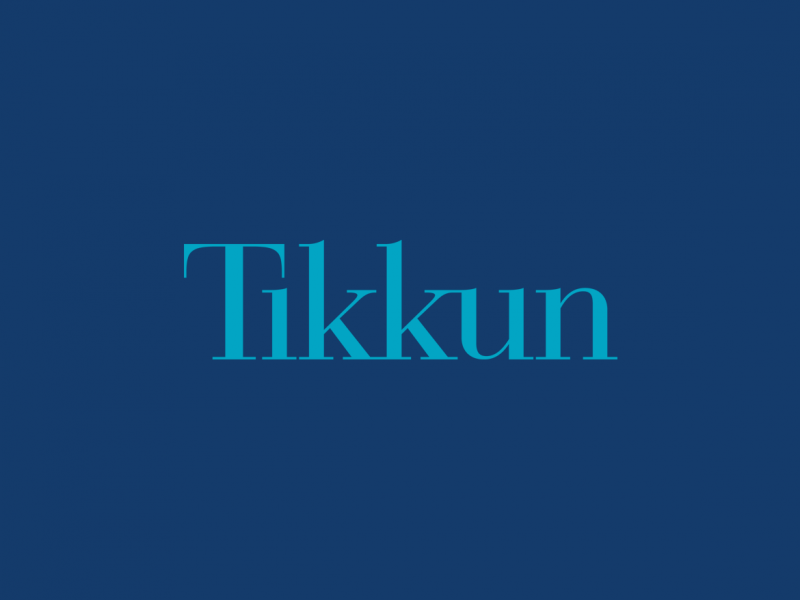Why do many of us feel guilty when we catch a cold or grow a tumor? Is it because so many religions depict illness as divine punishment?
2014
Work Your Quirk: The Power of the Disability Art Community
|
When I first joined Interact Theater Company, I had recently been in a motorcycle accident and lost the use of my right arm. The question was posed, “If there was a pill to take away your disability, would you take it?” I was surprised to find that I was the only one in the circle who said yes. I looked at my fellow performers and wondered if I would ever be able to accept my new self.
2014
Holy Access
|
I am lying comfortably on the table in my acupuncturist’s office. Mellow music plays in the background while my acupuncturist soothingly talks me through my treatment. As we chat casually about the different approaches between Eastern and Western medicine, she suddenly stabs me with a metaphorical needle, puncturing our trust: in the same calm tone she has been using all morning, she tells me that, within Chinese religions, physical illness and disability are often understood as “a result of mistakes made in a previous life—a disability is an indication of a lesson that one’s spirit needs to learn.” Inaccurately conflating the rich diversity of Chinese philosophical and religious systems of thought under the single blanket of “Chinese religions,” my white acupuncturist has simultaneously disseminated incorrect information and made me feel inferior and unmeritorious. Her suggestion that I am to blame for my disability jolts me back to a similar experience from the previous year, when I was traveling with my guide dog, Papaya, and needing to catch a connecting flight. An airline employee assisted me with the transfer while discussing the unending bounties of Jesus’s love.
2014
Crip Time
|
“I live life in slow motion. The world I live in is one where my thoughts are as quick as anyone’s, my movements are weak and erratic, and my talk is slower than a snail in quicksand,” writes Australian author and activist Anne McDonald, reflecting on her perception of time. “I have cerebral palsy, I can’t walk or talk, I use an alphabet board, and I communicate at the rate of 450 words an hour compared to your 150 words in a minute—twenty times as slow. A slow world would be my heaven. I am forced to live in your world, a fast hard one.
2014
Who Can Be Commanded?: Disability in Jewish Thought and Culture
|
Recently two dear friends asked me to advise them about their pregnant daughter, who just discovered that her fetus has Noonan syndrome, a genetic condition that can result in heart defects, unusual facial features, short stature, and learning problems. The pregnant daughter wanted to keep the child, but her husband was afraid that the child would have a difficult life and was concerned about possible consequences for the rest of the family. My friends presented the possibility of abortion in this case as a Jewish legal question. May a person, they asked, decide over life and death? What is our responsibility to act on this, and where are the limits? My reply:
Though such children have a difficult path to follow, yet it is a life with many possibilities for fulfilment.
2014
Readers Respond: Letters to the Editor, Fall 2014
|
A NOTE ON LETTERS TO THE EDITOR:
We welcome your responses to our articles. Send your letters to the editor to letters@tikkun.org. Please remember, however, not to attribute to Tikkun views other than those expressed in our editorials. We email, post, and print many articles with which we have strong disagreements, because that is what makes Tikkun a location for a true diversity of ideas. Tikkun reserves the right to edit your letters to fit available space in the magazine.
2014
Diverse Insights into Jewish-Muslim Relations
|
A History of Jewish-Muslim Relations
Edited by Abdelwahab Meddeb and Benjamin Stora
Princeton University Press, 2014
This collection of scholarly yet accessible articles by dozens of Jewish and Muslim experts is the definitive source for understanding a complex relationship between Muslims and Jews from the seventh century to the present day. Its 1,146 pages cover pressing political issues like whether Jews are demeaned in Islam and whether Jews faced real (as opposed to just remembered) anti-Semitism in Islamic societies. It also explores the ways in which contemporary Islamophobia and anti-Semitism are both products and causes of the political struggle between Israelis and Palestinians. Yet the richness of this fantastic and exciting book lies also in its descriptions of how Jews and Muslims have learned from each other in the arenas of philosophy, science, art, literature, and mysticism.
2014
No Casseroles for Schizophrenics: The Church and Mental Illness
|
One important lesson we must all learn, Christian or otherwise, is that the patient is not the illness. Symptoms of the illness are not the patient’s fault nor are they signs of a sick soul.
2014
Both Wilderness and Promised Land: How Torah Grows When Read Through LGBTQ Eyes
|
B’reishit—in the beginning of the Torah, and the beginning of the world—there was God, a very queer God. Unlike other deities described in Iron Age texts, this God didn’t have a form or face or identifiable role in the natural world. In other Iron Age creation stories, deities are action heroes, creating order out of chaos by slaying monsters, other deities, and occasionally their parents. In Genesis, God brings order out of chaos simply by speaking. No blood, no pantheon, no rivals, no triumphs to portray on temple walls, nothing to visualize or imagine.
2014
The Crisis of Disability Is Violence: Ableism, Torture, and Murder
|
Andre McCollins was eighteen years old in 2002 when he was a student at the Judge Rotenberg Center in Canton, Massachusetts. Like many of the students at the center, a residential institution for people with disabilities, Andre is autistic and has other mental disabilities. One day in October 2002, a staff member told McCollins to take off his jacket. He said no. That was direct defiance and disobedience to directions from staff.
2014
A Promised Land
|
How to keep the promise of a promised land? Not only a name, a place, a flag. It’s an end to wandering in the wilderness,
the wilderness inside ourselves. It’s singing sweeter than scorpions. It’s touching everywhere softer than snakes.
2014
Inspired by Moses: Disability and Inclusion in the Jewish Community
|
I believe that Jewish communities must stop creating “special” programs that serve people with disabilities in segregated settings and instead support personalized efforts to enable people with disabilities to live full and meaningful Jewish lives of their own choosing.
2014
On Violence, Joy, and Justice: The Poetry of C.K. Williams
|
All at Once
Farrar, Straus, and Giroux, 2014
by C.K. Williams
Writers Writing Dying
Farrar, Straus, and Giroux, 2012
by C.K. Williams
On Whitman
Princeton University Press, 2010
by C.K. Williams
In his preface to On Whitman, C. K. Williams says only Shakespeare compares with Walt Whitman in providing him an “inexhaustible” source of inspiration. Yet “with both, but particularly with Whitman, I need a respite, surcease, so as not to be overwhelmed, obliterated. This is more raw than Harold Bloom’s ‘anxiety of influence,’ more primitive.”
On the dust jacket for the Whitman monograph, Michael Robertson calls Williams “one of our most Whitmanesque poets.” The idea of Williams as a Whitman for our time is not wrong, but it is incomplete and potentially misleading. Yes, Williams arrived in his third collection of poems at a long, sinuous free-verse line that reminds one, at first glance, of Whitman. Yes, one finds in Williams great sympathy for the suffering of others and a willingness to open poetry to a wide range of human experience, including parts of it many of us would rather not see.
2014
Dear Jael, Wife of Heber the Kenite
|
The Torah anesthetized me long ago. Back before I could drink wine, it broke my heart to read Leviticus. “No man who has any defect may come near.” I am twice expelled.
2014
The Rabbi Who Visited Death Row
|
Rabbi Chaim Richter and I met on death row during my second year of isolation in a maximum-security women’s prison in the Florida Everglades. I was the only woman on death row at the time. Having been wrongfully convicted in the murder of two police officers, I remained under sentence of death for five years until 1981, when the Supreme Court of Florida changed my sentence from death to life imprisonment. After twelve more years of imprisonment, I won my federal habeas corpus and the federal district court overturned my case. Rabbi Richter visited, counseled, and befriended me throughout those long years.

